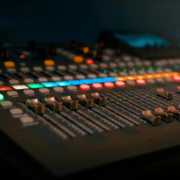Back-to-back (B2B) sessions, where two or more DJs perform together, are thrilling experiences for both the performers and the audience. However, executing a seamless B2B set requires preparation, communication, and adaptability. In this guide, we’ll explore how to coordinate effectively with your partner(s) to ensure your shared set becomes a standout performance.
Why Back-to-Back Sessions Are Special
B2B sets allow DJs to combine their unique styles, creating dynamic and unexpected musical journeys. These sessions often bring fresh energy to events, showcasing chemistry and creativity that a single DJ might not achieve alone. But, they also present challenges: mismatched styles, clunky transitions, or miscommunication can ruin the vibe.
Communicate Before the Session
The foundation of a successful B2B session is clear communication. Before stepping onto the stage, discuss the following with your partner:
- Music Styles and Genres: Decide on the overall vibe. Are you blending house and techno, or sticking to a specific genre?
- Energy Levels: Talk about how you’ll structure the set’s energy curve to keep the crowd engaged.
- Song Selection: While you don’t need to share your entire library, discussing key tracks you plan to play helps avoid overlap.
Tip: Use collaborative playlists on platforms like Spotify or Rekordbox to exchange track ideas.
Understand Each Other’s Strengths
Every DJ has a unique style. Some excel in beatmatching, while others shine with creative transitions or effects. Identify each other’s strengths and let them guide your roles during the performance.
- Transitions: Decide who will handle smoother transitions or experimental switch-ups.
- FX and Loops: If one DJ is better at using effects or live looping, allow them to add those elements without overcrowding the mix.
Practice Together
If possible, meet up and rehearse before the event. This builds chemistry and helps you understand each other’s timing, style, and workflow.
- Practice Timing: Experiment with how long each DJ should play before switching. Some B2B sets alternate every 2–3 tracks, while others switch after longer mini-sets.
- Gear Familiarity: Ensure both DJs are comfortable with the equipment. If you’re using external gear, such as drum machines or samplers, rehearse how to integrate them smoothly.
Divide Responsibilities on Stage
When sharing a setup, knowing who handles what ensures smoother execution. For example:
- One DJ handles EQs and volume faders while the other cues the next track.
- Take turns controlling effects and loops, so the mix doesn’t feel overcrowded.
- If using dual laptops with controllers, decide who will lead transitions for key moments like drops or breakdowns.
Adapt to the Crowd
One of the most exciting aspects of a B2B set is spontaneity. While planning is essential, leave room to adapt based on the crowd’s energy.
- Read the Room: If the audience responds enthusiastically to a specific style, lean into it, even if it deviates from your plan.
- Dynamic Flow: Stay flexible with track selection to maintain a cohesive energy.
Stay in Sync
Synchronization is crucial for a seamless B2B experience. Here’s how to stay on the same page:
- Eye Contact: Non-verbal communication is key. A quick glance can signal when it’s time to transition.
- Hand Gestures: Use simple gestures to indicate actions like a track drop, filter sweep, or tempo adjustment.
- Headphones Sharing: If both DJs need to hear the same cue, sharing headphones can help ensure smoother transitions.
Create Moments of Surprise
One of the biggest advantages of a B2B set is the ability to surprise the audience. Work together to create standout moments:
- Unexpected Track Drops: Drop a classic or unexpected track at just the right moment for maximum impact.
- Live Remixing: If you’re skilled with samplers or effects, remix a track live to create something unique.
- Collaborative Transitions: Blend elements from two tracks simultaneously, highlighting the fusion of both DJs’ styles.
Manage the Technical Setup
A successful B2B session requires a smooth technical setup. Here’s what to consider:
- Audio Routing: If using separate laptops or controllers, ensure proper routing into the mixer.
- Sync Options: Decide whether to use sync features or rely on manual beatmatching.
- Backup Gear: Bring spare cables, USBs, and headphones to avoid disruptions.
Embrace Mistakes Gracefully
Mistakes can happen in the heat of a live performance. Whether it’s a missed cue or a clunky transition, handle it with confidence:
- Stay Calm: A minor error is often unnoticed by the crowd if you don’t draw attention to it.
- Recover Quickly: Use effects, loops, or filters to mask mistakes and transition smoothly.
- Keep the Energy Up: A well-timed track can quickly shift focus back to the music.
End on a High Note
Plan your final moments to leave a lasting impression. Coordinate your closing tracks to ensure a strong finish that resonates with the audience.
- Grand Finale: Choose an anthem or high-energy track that encapsulates the set’s vibe.
- Seamless Hand-Off: If another act is following you, transition smoothly to their first track.
Back-to-back sessions are a unique opportunity to showcase collaboration, creativity, and chemistry with another DJ. By communicating, practicing, and staying adaptable, you can elevate your B2B performances to unforgettable heights.
Want to learn more tips to improve your DJing? Visit mp4remix.com for additional guides, resources, and inspiration to level up your craft.










